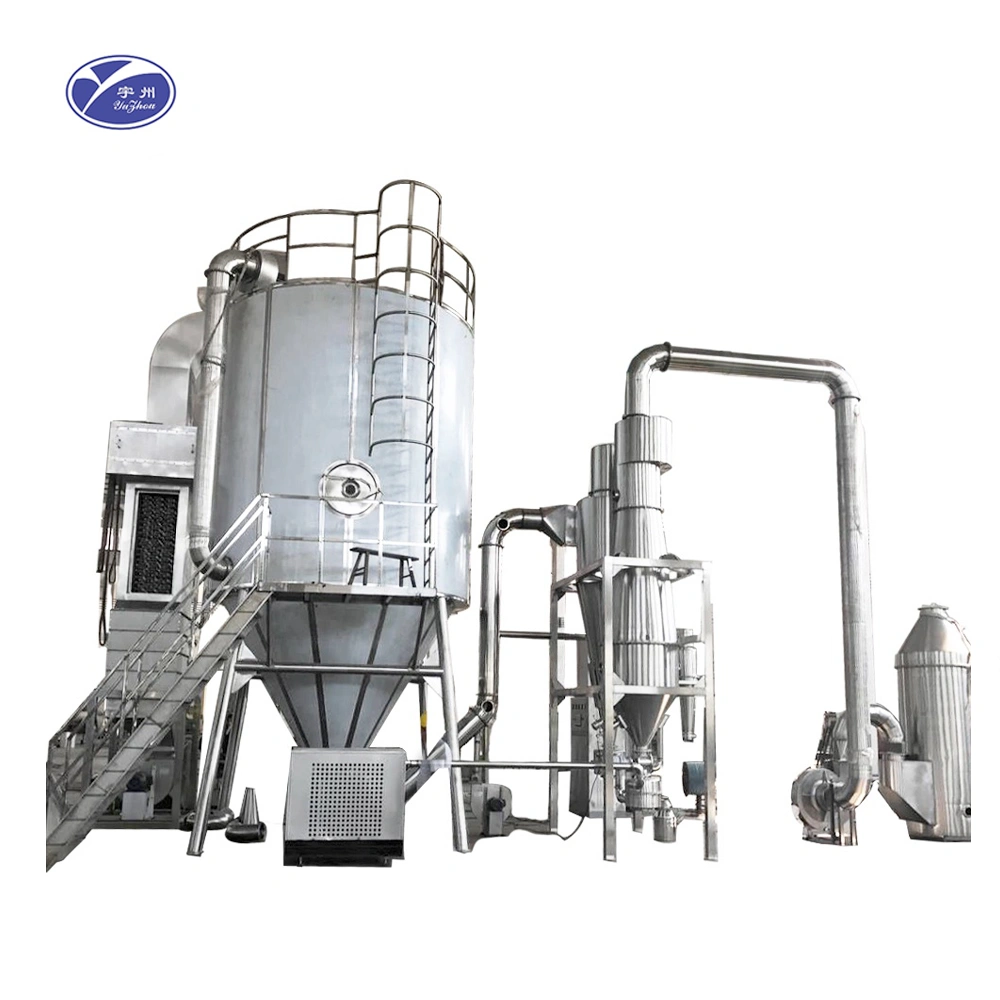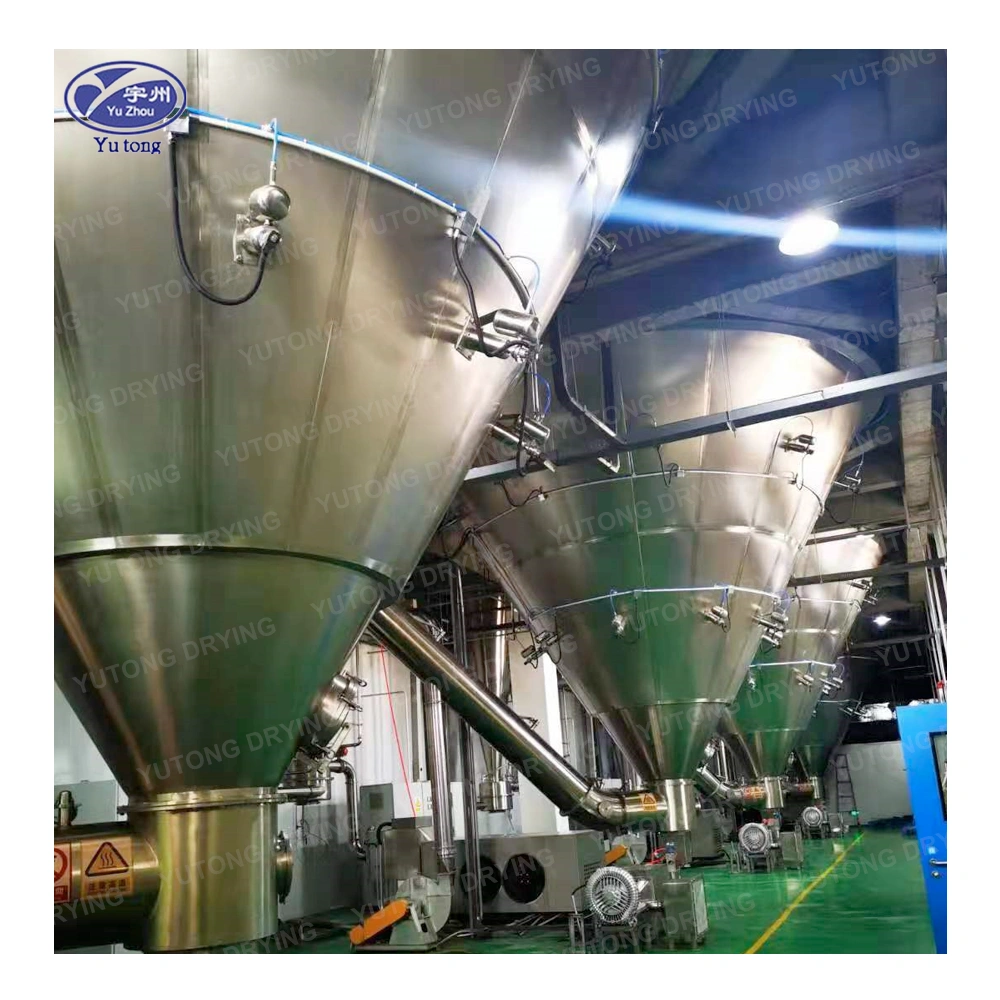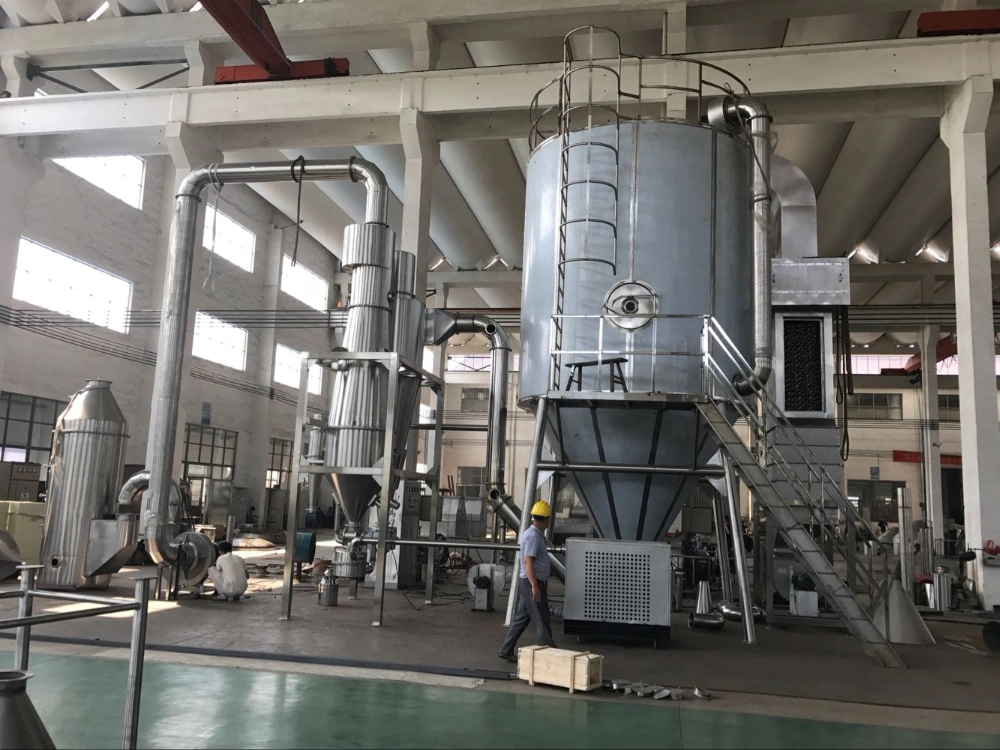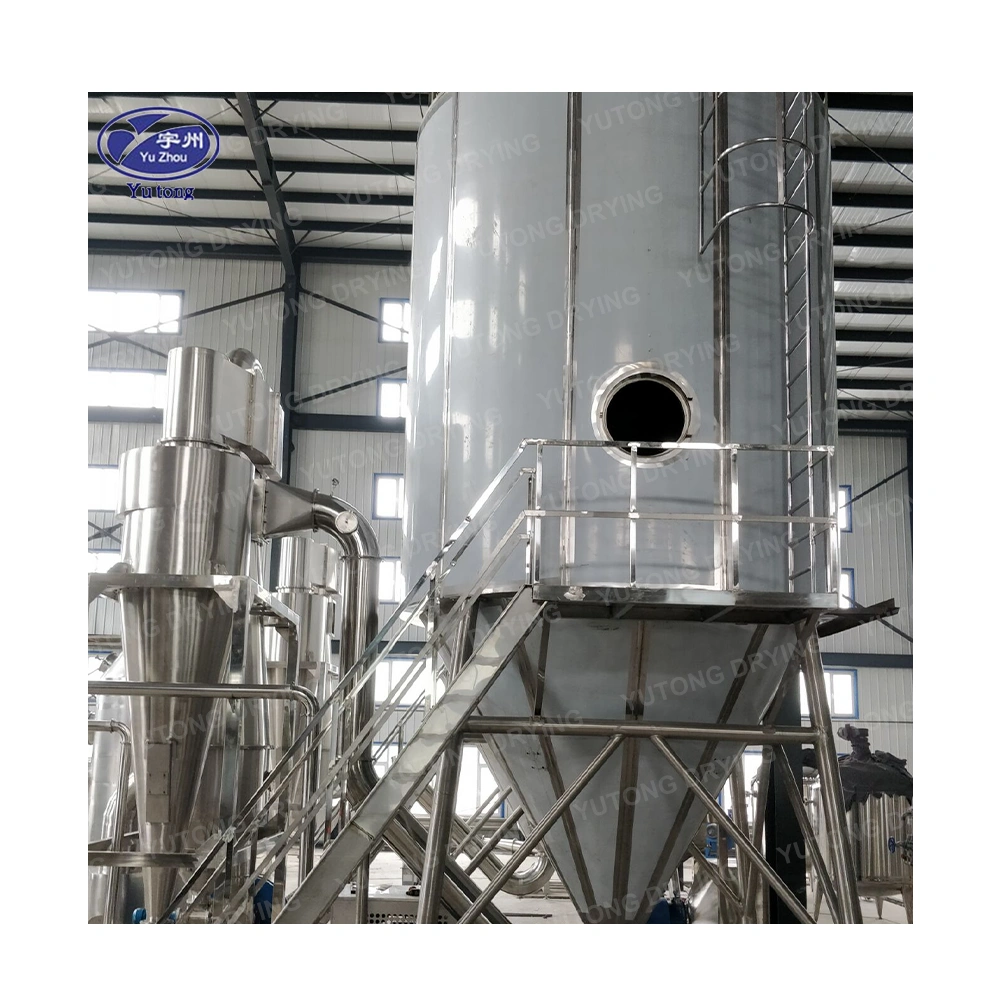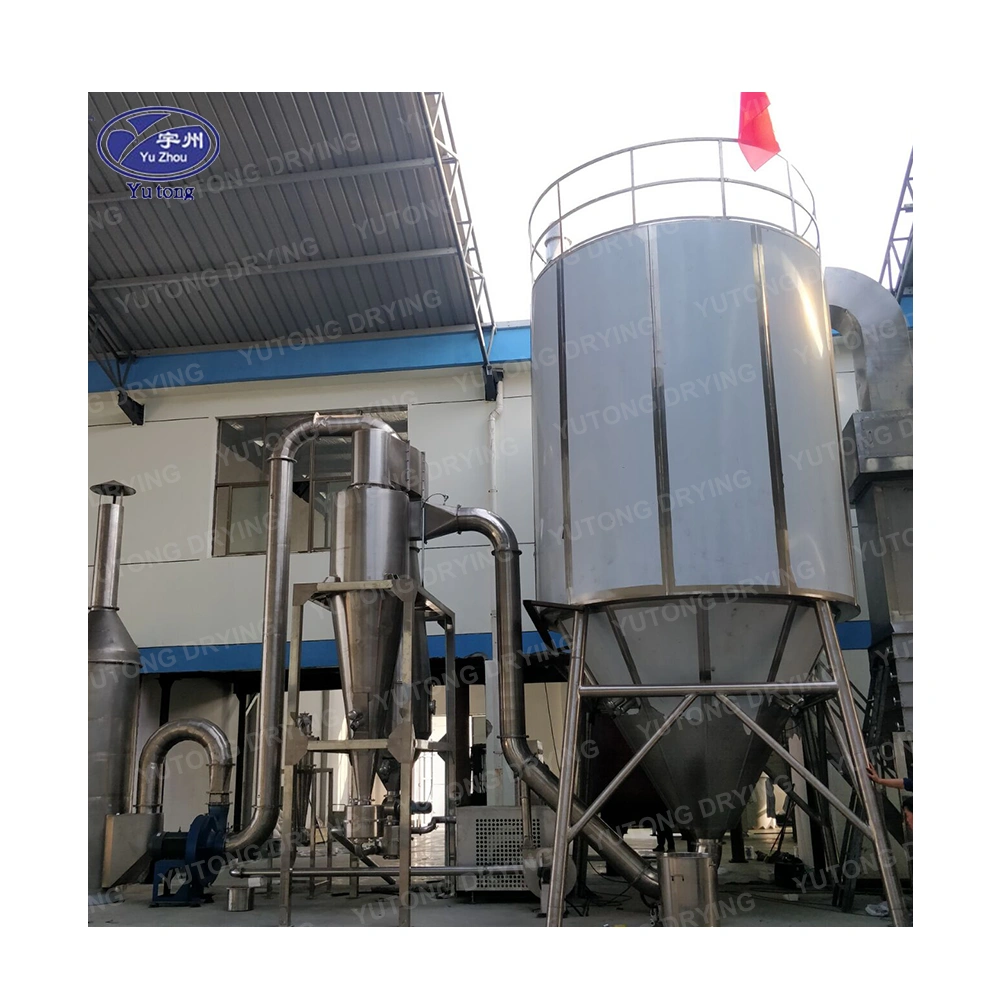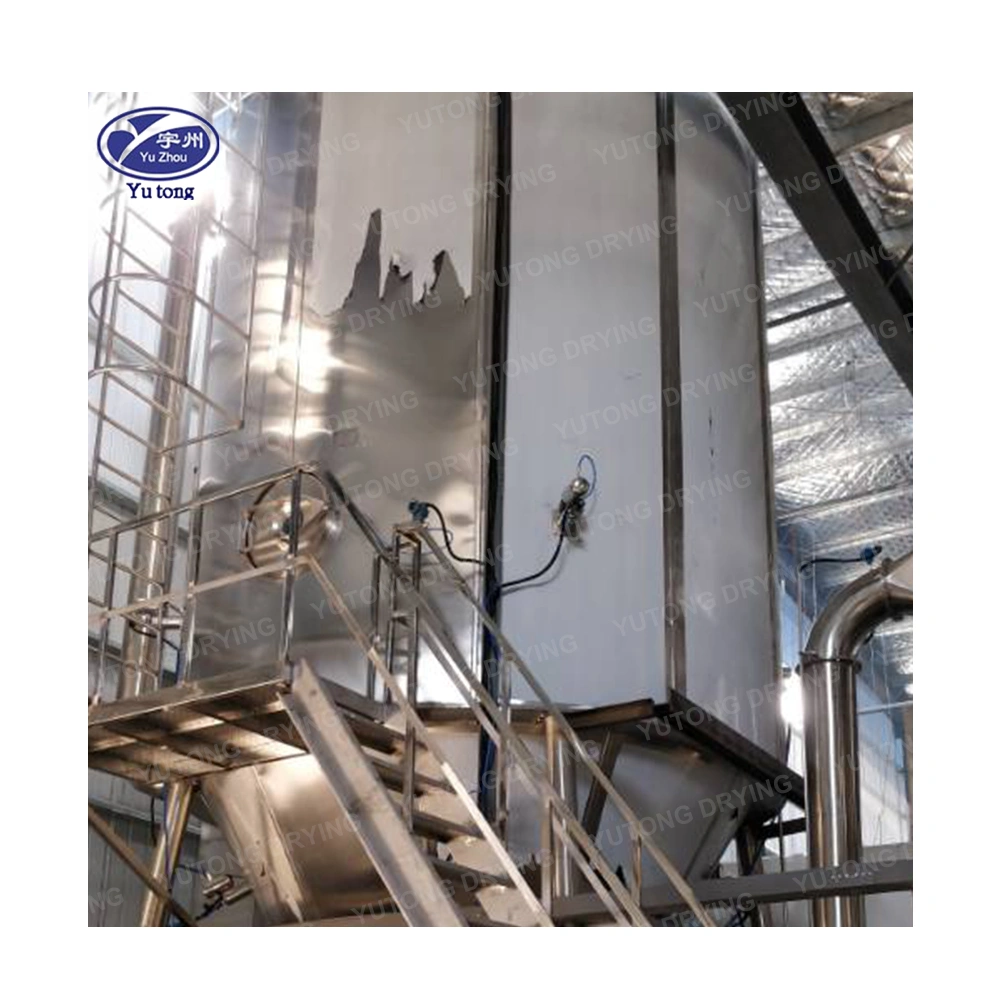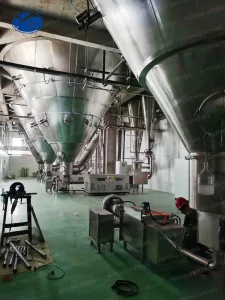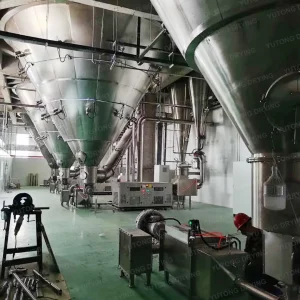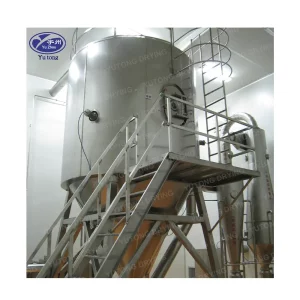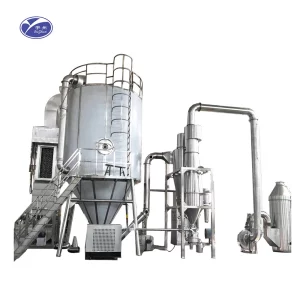Table of Contents
Product Detail
bayliss spray dryer
In the world of industrial processing, spray drying stands as a pivotal technology. It’s the go-to method for transforming a liquid or slurry into a dry powder in one swift, continuous process. Among the prominent names in this domain, the Bayliss Spray Dryer has carved a niche for itself. This article delves into the workings of spray drying equipment, the specifics of SDS spray dryer systems, and why the Bayliss spray dryer is a noteworthy choice.
Understanding Spray Drying Equipment
Spray drying is a process widely utilized in various industries, including food, pharmaceuticals, and chemicals. The main goal is to produce a dry product from a liquid by rapidly drying it with a hot gas. This method is particularly beneficial for heat-sensitive materials and for creating products with consistent properties.
The Process of Spray Drying
The process begins with the atomization of the liquid feed into a spray of droplets. This is typically achieved using a rotary atomizer or a nozzle. The droplets are then introduced into a drying chamber, where they meet a stream of hot air. The rapid evaporation of moisture results in the formation of dry particles, which are then collected through a cyclone separator or a bag filter.
Atomization Techniques
Atomization is a critical step in spray drying. Different techniques, such as pressure nozzles, two-fluid nozzles, and centrifugal atomizers, are employed based on the nature of the feed and desired product characteristics. Each method offers unique advantages and is selected to optimize the drying process.
Drying Chamber Dynamics
The design of the drying chamber influences the drying efficiency and product quality. Factors such as airflow patterns, temperature gradients, and chamber size must be optimized. This ensures that droplets are uniformly dried without overheating, which is crucial for heat-sensitive materials.
Collection and Separation Methods
Once the drying is complete, it is vital to separate the dry powder from the exhaust air. Cyclone separators and bag filters are commonly used to achieve this. The choice between them depends on the particle size, the nature of the powder, and the specific industry requirements.
Key Components of Spray Drying Equipment
- Atomizer: The device used to create droplets from the liquid feed. It can be a nozzle or a rotary atomizer.
- Drying Chamber: The space where the liquid droplets are dried into powder.
- Heat Source: Usually, hot air is used to dry the droplets.
- Collection System: Typically includes a cyclone separator and/or bag filter to collect the dry powder.
Atomizers: Nozzle vs. Rotary
Nozzle atomizers are preferred for feeds with lower viscosity, while rotary atomizers are chosen for their ability to handle higher viscosities and larger volumes. The choice affects not only the droplet size distribution but also the energy efficiency of the entire process.
Heat Sources: Hot Air Variants
The source of hot air, whether gas-fired, electric, or steam-heated, impacts the drying process. Each has its pros and cons regarding energy efficiency, temperature control, and operational costs. The selection must align with the production scale and energy availability.
Collection Systems: Cyclone vs. Bag Filter
Cyclone separators are effective for coarse particles and are energy-efficient. Bag filters, on the other hand, are used for finer particles but may require more maintenance. Understanding the properties of the final product guides the choice of the collection system.
SDS Spray Dryer Systems
SDS (Spray Drying Systems) offers a range of solutions for industrial spray drying needs. Their systems are designed for efficiency, reliability, and versatility and cater to various production scales.
Features of SDS Spray Dryer Systems
- Efficiency: SDS systems are engineered to maximize drying efficiency, ensuring optimal use of energy and resources.
- Scalability: Whether it’s for small batches or large-scale production, SDS systems can be tailored to meet specific needs.
- Versatility: Capable of handling a wide range of materials, SDS systems are suitable for diverse industries.
Energy Optimization
SDS systems incorporate advanced technologies to reduce energy consumption. They utilize heat recovery methods and optimized airflow designs to ensure minimal energy wastage, which is crucial for lowering operational costs.
Modular Design for Scalability
The modular design of SDS systems allows easy expansion or modification. This adaptability is key for businesses looking to scale operations without significant overhauls, making it a cost-effective solution for growing industries.
Material Handling Capabilities
SDS spray dryers are engineered to handle a variety of materials, from viscous slurries to delicate emulsions. This versatility is achieved through customizable feed systems and variable temperature controls, meeting diverse industry standards.
Advantages of Using SDS Spray Dryers
- Consistent Product Quality: With precise control over drying parameters, SDS spray dryers produce uniform and high-quality powders.
- Energy Efficiency: Advanced design reduces energy consumption, lowering operational costs.
- Easy Maintenance: Designed for ease of use, SDS systems require minimal maintenance, enhancing productivity.
Consistency Through Precision Control
SDS systems offer precise control over temperature, airflow, and feed rate, ensuring that each batch of product meets stringent quality standards. This consistency is vital for industries like pharmaceuticals and food, where product uniformity is paramount.
Reducing Energy Costs
By incorporating state-of-the-art insulation and efficient heating mechanisms, SDS spray dryers significantly cut down energy usage. This not only lowers costs but also contributes to a greener, more sustainable production process.
Maintenance and Operational Ease
The design of SDS systems emphasizes ease of maintenance. With quick-access panels and self-cleaning options, downtime is minimized, ensuring continuous operation and boosting overall productivity.
The Bayliss Spray Dryer: A Closer Look
The Bayliss Spray Dryer is renowned for its robust construction and reliable performance. It integrates the best of modern technology to deliver superior drying solutions for various applications.
Why Choose Bayliss Spray Dryer?
- Durability: Built with high-quality materials, Bayliss dryers are designed to withstand the rigors of industrial use.
- Advanced Technology: Incorporates cutting-edge features for enhanced drying performance and process control.
- Customizable Solutions: Offers flexibility in design to meet specific customer requirements.
Built for Industrial Strength
Bayliss Spray Dryers are constructed using premium-grade materials, ensuring longevity even under harsh operating conditions. This durability translates into a lower total cost of ownership over the equipment’s lifespan.
Integrating Modern Technology
Bayliss systems are equipped with the latest technological advancements, such as real-time monitoring and automated control systems. These features enhance the drying process’s precision and reliability, leading to superior product outcomes.
Tailored to Specific Needs
The flexibility in Bayliss’s design allows for customization to meet unique production requirements. Whether it’s adjusting for different feed viscosities or incorporating unique filtration systems, Bayliss can adapt to specific industrial needs.
Applications of Bayliss Spray Dryer
- Food Industry: From milk powder to flavorings, spray drying is essential for producing various food products.
- Pharmaceuticals: Used for drying heat-sensitive compounds and creating fine powders for medication.
- Chemicals: Essential for producing chemicals in powder form for easier handling and processing.
Revolutionizing the Food Sector
In the food industry, the Bayliss Spray Dryer aids in producing a wide array of products, from instant coffee to nutritional supplements. The uniformity and quality of the output are crucial for consumer satisfaction and regulatory compliance.
Advancements in Pharmaceutical Processing
For pharmaceuticals, Bayliss Spray Dryers are indispensable in creating stable and effective drug formulations. The ability to dry sensitive compounds without degradation ensures the efficacy and safety of medications.
Streamlining Chemical Production
Converting liquids into dry powders simplifies handling and enhances product stability in chemical manufacturing. The precision of Bayliss systems ensures that chemical properties remain intact, facilitating further processing and application.
Benefits of Spray Drying
Spray drying offers numerous advantages over other drying methods, making it a preferred choice for many industries.
Key Benefits
- Rapid Drying: Converts liquid to powder in a matter of seconds, preserving the quality of heat-sensitive materials.
- Uniform Particle Size: Produces powders with consistent particle size, which is essential for quality control.
- Scalability: Easily scalable to suit different production needs, from laboratory-scale to entire industrial operations.
Speed and Efficiency
The rapid nature of spray drying allows for the quick transformation of liquids into powders, significantly reducing processing time. This efficiency is particularly beneficial in high-demand scenarios where speed is crucial.
Consistency in Product Quality
Spray drying ensures that each particle is of uniform size and composition, which is vital for applications where consistency is key. This uniformity aids in achieving predictable product behavior and performance.
Adapting to Production Demands
Spray drying systems can be easily scaled up or down, accommodating changes in production demand without compromising quality. This flexibility makes them ideal for industries with fluctuating output requirements.
Challenges and Considerations
While spray drying is highly effective, it does come with challenges that must be managed to ensure optimal results.
- Energy Consumption: Requires significant energy input, necessitating efficient design to minimize costs.
- Equipment Maintenance: Regular maintenance is necessary to prevent downtime and ensure consistent performance.
- Initial Investment: High upfront cost for equipment, though the long-term benefits offset this.
Managing Energy Requirements
The energy-intensive nature of spray drying necessitates careful planning and design to optimize efficiency. Implementing energy-saving technologies and practices can significantly reduce operational costs.
Ensuring Consistent Performance
Regular maintenance of spray drying equipment is essential to prevent unexpected downtime and maintain product quality. Scheduled inspections and parts replacements can extend the system’s life.
Evaluating Cost-Benefit Ratios
The initial investment in spray drying technology is substantial, but the long-term benefits, including reduced operational costs and increased production capacity, offer a compelling return on investment.
Conclusion
The Bayliss Spray Dryer, alongside SDS spray dryer systems, represents the pinnacle of spray drying technology. Offering efficiency, reliability, and versatility, these systems are indispensable in industries ranging from food to pharmaceuticals.
Whether you’re looking to improve product quality, enhance efficiency, or expand your production capabilities, investing in a Bayliss spray dryer or an SDS system is a step toward achieving your goals. By understanding the intricacies of spray drying equipment and leveraging the strengths of advanced systems like Bayliss, you can unlock new potential in your production processes.
Spray drying remains a cornerstone of modern manufacturing, bridging the gap between liquid formulations and dry products with unmatched precision and efficiency. The future of production lies in embracing these innovations, ensuring that industries can meet the growing demands of quality, speed, and sustainability.
Specifications
|
spec
|
ZPG-25
|
ZPG-50
|
ZPG-80
|
ZPG-100
|
ZPG-150
|
ZPG-200
|
ZPG-300
|
|
|
evaporation capacity(kg/h)
|
25
|
50
|
80
|
100
|
150
|
200
|
300
|
|
|
process amount of material liquid(kg/h)
|
25-34
|
50-68
|
80-108
|
100-135
|
150-203
|
200-270
|
300-406
|
|
|
output of finished pcoduct(kg/h)
|
4.8-7.2
|
9.2-14
|
14.8-22.4
|
18.4-28
|
24-42
|
36.8-56.4
|
55-85
|
|
|
solid content of material liquid( %)
|
18-30
|
|||||||
|
moisture content of finished product( %)
|
3-5
|
|||||||
|
electric power(kw)
|
63
|
132
|
153
|
204
|
246
|
330
|
||
|
heat source
|
Steam pius electricity
|
|||||||
|
Collecting method of product and its efficiency
|
Grade one or two or three stage cyclone wet dust remover is greater than or equal to 95%
|
|||||||
|
automatic control meters and instruments
|
indicator of not air and exhaust air temperature
|
|||||||
|
temperature of air inlet(℃)
|
160-220
|
|||||||
|
temperature of air outlet(℃)
|
80-100
|
|||||||
|
L
|
7000
|
8000
|
9800
|
11000
|
12200
|
14100
|
15000
|
|
|
overal dimensions(mm)
|
W
|
4000
|
5000
|
5700
|
6200
|
7000
|
7800
|
9000
|
|
H
|
6200
|
6900
|
8000
|
8900
|
10750
|
11900
|
13000
|
|
Applications
Applicable Industries: Building Material Shops, Manufacturing Plant, Machinery Repair Shops, Food & Beverage Factory, Farms, Restaurant, Retail, Food & Beverage Shops

